Two years ago, at 21:54:16 GMT on 28 February 2021, my meteor video camera in Loughborough, UK, recorded the Winchcombe meteor fireball over Gloucestershire. Fifty years earlier, as an 11 year old, I read in Patrick Moore’s The Observer’s Book of Astronomy about the Barwell meteorite that fell on Christmas Eve 1965. I thought then it would be amazing to find a meteorite.
With my first chemistry set at nine, I developed a love of chemistry. By 14, I was experimenting in my own home-made laboratory in Gateshead. I left school at 16, worked as a lab assistant and studied part-time to be an analytical chemist. My job used a lot of spectroscopy. With an interest in astronomy, I became interested in spectroscopic applications, especially chemical analysis of astronomical objects by examining their light.
After retiring, I continued my interest in astronomy and astrophotography and contributed to monitoring the skies using a video camera supplied and tested by William Stewart of the Nemetode meteor network founded by Alex Pratt and Stewart. The camera also fed data to Richard Kacerek’s UKMon network.
On 11 November 2018 I videoed a bolide fireball – brighter than the full moon. Later, after discussion with meteor spectroscopist Bill Ward from Nemetode, I added a diffraction grating to the camera. It was with this kit that I captured the visible spectrum of the Winchcombe fireball (Richard Bassom also captured the spectrum on a similar piece of grating that I provided). This was the first UK record of a spectrum of a meteor which became a recovered meteorite. The previous spectrum record was captured in Benesov, Czech Republic in 1991, but the meteorite itself was not found until 20 years later, in 2011.
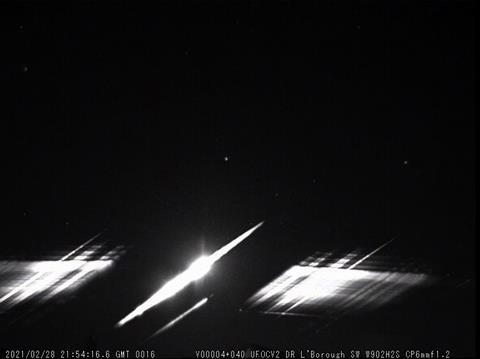
The video of the Winchcombe fireball from my camera, 82 miles from the impact site, shows the evolution of the ablating meteor’s visible spectrum and explosions over several seconds as it enters the atmosphere before impact as a meteorite. The presence of several elements in the meteor’s hot gases is indicated by atomic emission lines from calcium, magnesium, iron and sodium. Emission lines due to excited atmospheric oxygen and nitrogen are also present (some of which also cause the Northern Lights).
The video of the Winchcombe fireball from my camera, 82 miles from the impact site, shows the evolution of the ablating meteor’s visible spectrum and explosions over several seconds as it enters the atmosphere before impact as a meteorite. The presence of several elements in the meteor’s hot gases is indicated by atomic emission lines from calcium, magnesium, iron and sodium. Emission lines due to excited atmospheric oxygen and nitrogen are also present (some of which also cause the Northern Lights).
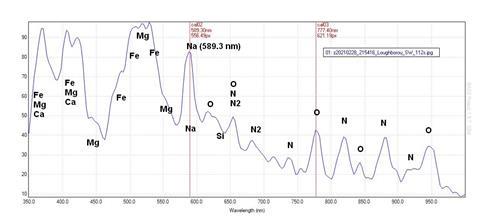
As a chemist, spectroscopist and amateur astronomer, I cannot think of a better example of nature providing such a spectacularly beautiful, out of this world demonstration of spectroscopy.
Soon after the meteorite fall, I was invited by East Anglian Astrophysical Research Organisation to take part in one of several independently organised searches for fragments of the meteorite, with government permission – something I’d never done before. It reminded me of the Barwell fall in Moore’s book. So, after waiting 50 years I thought ‘Why not?’ We spent a day searching, which was physically difficult and unsuccessful. We returned two weeks later. Again, it was physically difficult – I didn’t think it was possible and felt like giving up.
At times of need, I sometimes call out to my late father – Alan of Dunston, Gateshead, who had previously always been there encouraging me and making things for my telescope. I said out aloud, ‘Come on dad, help me find a meteorite’. Within 30 minutes, I found a black stone embedded in the soil. It had a fusion crust, bluish-purple iridescence and we knew it was a fragment of the recent Winchcombe meteorite. The fragment was located near the village of Woodmancote, within the Winchcombe meteorite-strewn field. It is touching that the meteorite came from an asteroid close to Jupiter – my dad’s favourite planet. Its appearance in my camera against the background stars was near the Great Orion nebula M42 in the constellation Orion – the first constellation my dad taught me about after he bought me my first telescope, when I was nine years old.
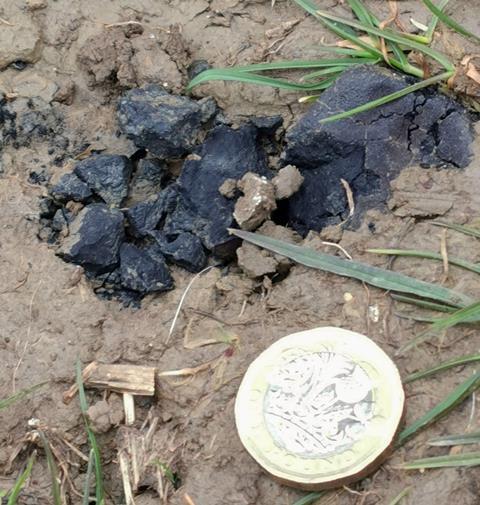
As an analytical chemist, I was excited to think that we had the first opportunity in the UK to compare the visible spectrum with the meteorite elemental analysis. The analysis showed additional elements including silicon, phosphorus, sulfur, aluminium, titanium, chromium, manganese and nickel, which contribute to the spectrum but masked by relatively intense emission lines of calcium, iron, magnesium and sodium. The analysis confirmed the elements I had identified from the visible spectrum before any chemical analysis had been done – one advantage of visible spectroscopy of distant objects.
I thought recording the visible spectrum of the rare astronomical event was a stroke of luck for an analytical chemist with lifelong interests in chemistry, spectroscopy and astronomy. But I never realised I would ever search for and find a meteorite fragment.






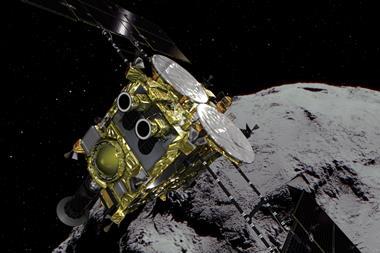






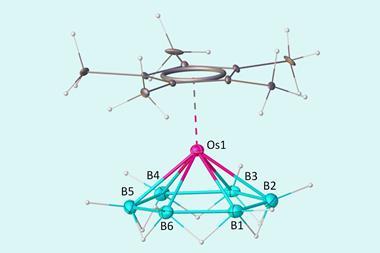

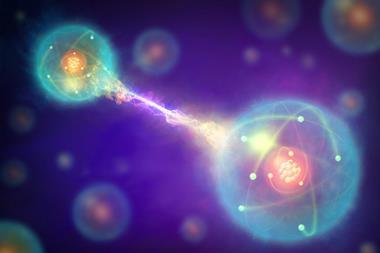







No comments yet